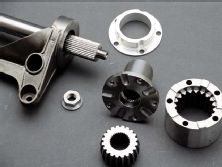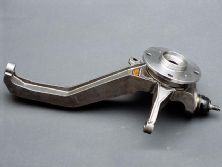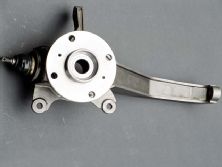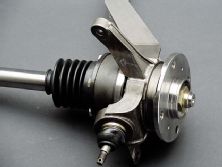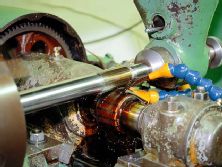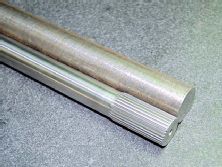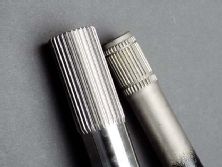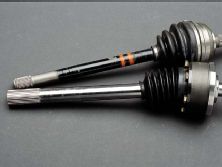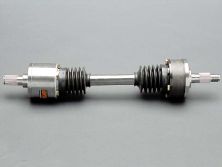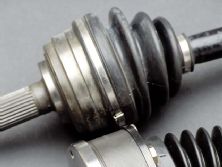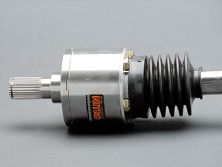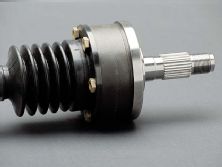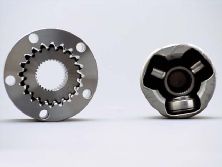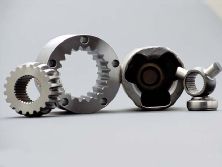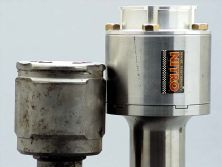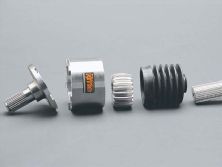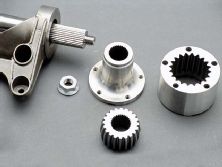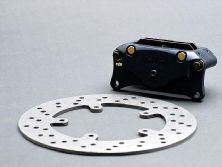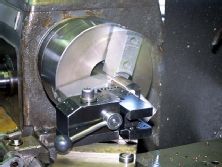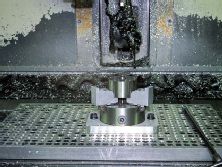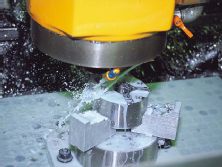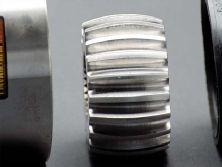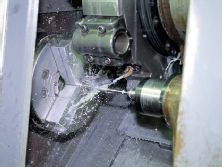Abusive relationships don't get any nastier than the relationship between Honda power and Honda drivelines (the AWD Diamond Star guys will surely disagree). In Honda drag racing, power output has been a non-issue for seven years or more. In fact, axles have been an issue since the first set of slicks was put on a turbo Honda. Fixes have been found, but just as consistency would come into play, a move to a bigger tire would accelerate the curve.
When 13-inch wheels with 25-inch tires were propelling front-drives in the high- to mid-9s, axle problems were solved. Now with racers running 26- to 28-inch meats, the driveline is once again under attack. There are systems that work with limited success, but at the heart of these systems is a reliance on OE parts. It's the OE parts that ultimately fail. The solution? Go Top Fuel.
With more domestic companies jumping into the import scene, it was only a matter of time before the big boys of drag racing put their engineering skills to the test and addressed front drive traction. Through the eyes of most domestic racers, NHRA's Top Fuel is the cream of the crop when it comes to abusing components. The engineering that goes into the engines, chassis and, most importantly, the drivetrain, is critical when going down the 1320 in the four-second zone at more than 300-mph with more than 6,000 hp applying the twist.
As an avid fan of fabrication, I've learned to appreciate the technology that goes into these chassis and drivetrains. It's this appreciation that brought me to noted driveline specialist Rob Moore of Moore Performance. "Noted" means his components can be found on 90 percent of Top Fuel and Funny Car entries. Additional bragging rights include last year's NHRA season, where nobody was able to take a first place victory without his components and the top 10 season points earners in both Top Fuel and Funny Car all utilized his driveline technology. How's that for a calling card? For some time now, Moore has been tinkering in front drive and the end result is a system which looks unbreakable.
The Moore Performance system includes two chrome-moly knuckles complete with bearings and four- or five-lug hubs, two axles, spool, complete front brake system and intermediate shaft. All these components are designed as factory replacement pieces to fit most popular Hondas.
The replacement knuckle is constructed of 4130 chrome-moly and is a direct replacement unit. The piece is 6 lbs. lighter and the chrome-moly makes it just as strong, if not stronger than the OEM knuckle. The lightness of the knuckle is an added benefit of the piece, as its main purpose is to accept the larger 930 outer CV joint. This larger unit is unable to clear the factory ball joint. The new knuckle drops the lower ball joint by 0.25 inches, which also aids in straightening the lower control arm.
OEM axle spline density comes in at 1.125 x 28-spline, while the Moore Performance axle is rated 1.4375 x 33-spline. OEM axle shafts were also swapped in favor of 300M 1.4375 units. With the larger shafts, added weight was the only problem with the new units, so Moore Performance rifle bored the axles, adding much more strength and less weight to the system.
The 300M material is only a portion of its durability because 80 percent of its strength comes from the special Moore Performance heat-treating. Axle shafts, spool and CV joints have all received this treatment and it's the key to the components' strength.
The outboard CV joint is a well-known piece in the racing industry. Its durable construction has been tested in various types of racing and is able to take on extreme horsepower even under harsh turning conditions.
Since the front wheels on a Quick Class car are used to maneuver and propel the vehicle, it's vital the vehicle has a joint capable of taking on severe steering angles. The GKN 930 joint along with the Moore Performance stub axle are the key ingredients for a bulletproof assembly. Some of the major problems with OE equipment are inferior stub axles that don't possess the strength to turn big tires and CV joints made to take on low horsepower.
Both inner and outer joints in OEM trim are built as singular units. This means the inner spline is one with the inner CV joint as well as the outer joint's spline. The Moore Performance inner and outer stub axles are made of heat-treated 300M material.
On the inner joint, the system utilizes a Moore Performance joint specifically designed for front-drive applications. Since the factory suspension systems incorporate so much movement from left to right and up and down, the axle needs to have the ability to plunge with an in-and-out motion. The OEM inner CV relies on a tripod system with three bearings, where the Moore set-up uses 20 teeth spread throughout the joint aiding in equal distribution of torque, whereas the tripod style uses three bearings to cover the CV's surface area.
The more vulnerable components in this set-up are the three bearings and the tripod where the Moore setup has a one-piece crown. Using a 20-spline set-up covers more surface area and disperses more torque throughout the crown rather than concentrating the power on three teeth (tripod). The crown gear is a unique piece, in that it has a slight radius cut into the gear, giving it the ability to move in an up and down and in and out motion without losing much surface area contact.
Adding more strength to the assembly is a billet spool specifically designed for the axle set-up. Moore Performance also sells drop-in spools for stock splined axles too, but the unit designed for this kit utilizes a much larger diameter and spline than factory specs. Machined of 4340 chrome-moly, the spool is able to take on a tremendous amount of torque delivered without missing a beat. Since some vehicles require the use of a speed sensor, a worm gear is built into the unit in case it's needed. The spool also uses the OE bearing's outside diameter but a much larger inside diameter, giving the spool a little bit extra meat to take on extreme power.
The brake system can be considered an added bonus to the entire package. Quick Class vehicles are allotted a minimum weight of 1,900 lbs., which makes the stock brake system somewhat overkill for the car; much of the vehicle's unsprung weight can be found on the brake. The Moore Performance set-up incorporates CNC-machined brake components, which include rotor, caliper and pads. A much thinner and lighter rotor was used in place of the factory unit.
The OE model is double the weight and vented for cooling, whereas the CNC units are cross-drilled 1018 material, which provides plenty of stopping power. OE calipers are single-piston floating units and the Moore kit offers a CNC two-piston caliper constructed of billet aluminum and incorporate a fixed set-up designed to accept wheels as small as 13 inches.
With Moore Performance's set-up, you can be sure to make every round without driveline failure. With the axle breakage blues cured, Moore has already prepared for OE transmission failure. While most seem to go to road race sequential gearboxes, they'll soon find its limitations, since most are designed for under 350 hp. Moore Performance is currently designing a sequential gearbox specifically engineered for front-drive Hondas and set up to plug into OE bell housings. Also in the Moore line-up is a street version of this axle set-up as well as replacement synchros for OE transmissions.

